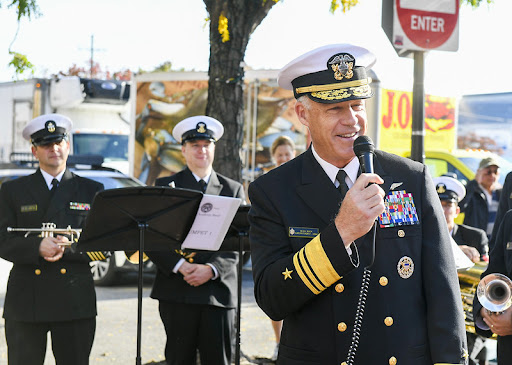
Welcome to the second in our series of three articles profiling some of the most notable superintendents in the U.S. Naval Academy’s 177+ years history of having superintendents. Our first post looked at the careers and contributions of a few of the earlier superintendents. They have all proven themselves to be excellent leaders both in their fields and in the role of superintendents. Many have been recognized with the prestigious Distinguished Graduate title bestowed by the USNA Alumni Association. All in all, over 60 superintendents have given their time and expertise to the Academy, and we are grateful to each for their dedication.
We have delved into the history of the Academy’s first superintendent, Franklin Buchanan, as well as Edward Walter Eberle, the 24th and Charles Stamps Minter, Junior, the 43rd. Here we’ll explore the lives of James F. Calvert, the 46th superintendent, Kinnaird McKee, the 48th, Bill Porter Lawrence, the 49th and Charles R. Larson, the 51st and 55th. We’ll round out our third post shortly with a final series of noteworthy superintendents.
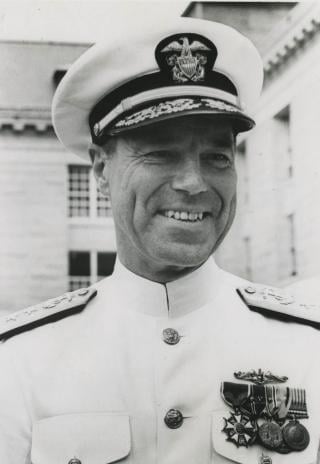 Admiral James F. Calvert
Admiral James F. Calvert
Served as Superintendent: July 20, 1968 - June 15, 1972 (46th)
This Academy graduate was part of the Class of 1943, which embarked on their naval careers headlong into the jaws of World War II. As part of the effort to fast-track graduates for war, Calvert graduated in just three years and reported directly to submarine school in New London, Connecticut. Then it was off to war in the Pacific. He served admirably, taking on nine war patrols in USS Jack and USS Haddo, the latter of which was in Tokyo Bay for the historic signing of the Japanese Instrument of Surrender on September 2, 1945.
Not long after, the Cold War found him commanding USS Trigger. From there, he was selected as nuclear submarine pre-commissioning officer by Admiral Hyman Rickover. He took over command of USS Skate from 1957 to 1961. It was the third nuclear submarine commissioned and only the second submarine in history to reach the North Pole; Calvert and his crew made the monumental journey and crossed the North Pole under Arctic ice. A year later on March 17, 1959, he made history when the vessel actually surfaced through the ice at the North Pole; Calvert was the first commander to achieve this distinction and he was there for a special mission — to leave the ashes of the legendary explorer, Sir Hubert Wilkins, on the Arctic surface.
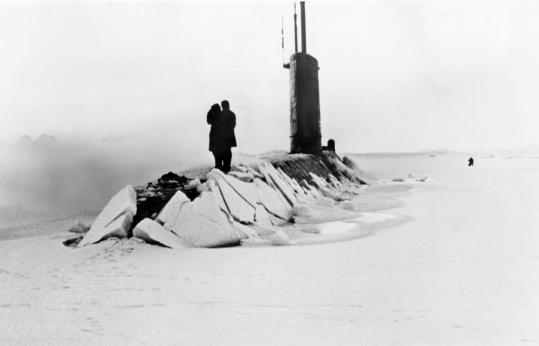
Vice Admiral Calvert demonstrated his prowess as a statesman when he negotiated a military agreement with Great Britain — and his skills as a leader with command of the Cruiser-Destroyer Flotilla 8. For these and all of his achievements, he was appointed Superintendent of the Naval Academy on July 20, 1968, the youngest in Academy history. While Superintendent of USNA, Calvert designed the Majors system that later served as a model for West Point and the Air Force Academy. He started the James Forrestal lecture series, initiated the current civilian director of athletics approach and was instrumental in helping fund Dahlgren Hall’s hockey rink and student center, as well as the Robert Crown Sailing Center. After serving as Superintendent, Calvert commanded the U.S. First Fleet in the Pacific and went on to find success as assistant to the Chairman of Texaco and then as Chairman of Aqua-Chem. He was recognized as a Distinguished Graduate in 2004.
 Kinnaird McKee
Kinnaird McKee
Served as Superintendent: August 1, 1975 - 1978 (48th)
Kinnaird Rowe McKee was a member of the USNA Class of 1951. He cut his teeth on the Pacific fleet destroyer USS Marshall during the Korean War, and subsequently served on eight submarines in the Atlantic Fleet. By 1956, Admiral McKee took command of a small experimental submarine known as the USS X-1. From there his career took off. He completed nuclear power training in 1958 and commissioned with USS Skipjack, the Navy's first high performance nuclear-powered attack submarine.
From 1973 to 1975 he served as Commander, Submarine Group Eight, as the NATO and U.S. submarine commander in the Mediterranean. Then on August 1, 1975, he was sworn in as Superintendent of the U.S. Naval Academy. He oversaw a significant historic event at the Academy in 1976, with the introduction of the first class of 81 women.
After his time at USNA he became Director, Naval Warfare, Office of the Chief of Naval Operations. On February 1, 1982, McKee ascended to Director, Naval Nuclear Propulsion and on March 2, was confirmed by the U.S. Senate for promotion to four-star rank. Admiral McKee retired on October 31, 1988; among his many plaudits were the Distinguished Service Medal, five awards of the Legion of Merit and three awards of the Navy Unit Commendation. He was named a USNA Distinguished Graduate in 2006.
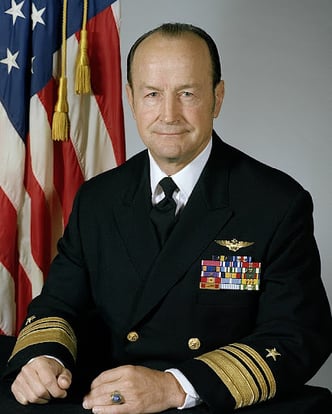 William Porter “Bill” Lawrence
William Porter “Bill” Lawrence
Served as Superintendent: August 28, 1978 - August 22, 1981 (49th)
A football player, Brigade Commander and Class President for the Class of 1951, Bill Lawrence helped design the Honor Concept while at Navy. After graduation, he became a decorated U.S. Navy Vice Admiral and skilled naval test pilot — the first to fly a naval aircraft twice the speed of sound (1,300 mph) — as well as a finalist for the Mercury space program in the late 1950s.
Lawrence served as Commanding Officer of Fighter Squadron 143 during the Vietnam War. His F-4 Phantom was shot down over North Vietnam in June 1967 and he became a prisoner of war at the notorious Hanoi Hilton until March 1973. There he became famous for his steely resistance and involvement with the tapping code. Upon his return to the U.S., Lawrence worked at the Pentagon before becoming Superintendent of the Naval Academy from 1978 - 1981, during which time he was promoted to Vice Admiral. His daughter, Captain Wendy Lawrence, (later a NASA astronaut and mission specialist and Distinguished Graduate) was at the Academy at the same time.
In 1981, Lawrence took command of the U.S. Third Fleet in Hawaii, a year after being promoted to Rear Admiral. He then served as Chief of Naval Personnel. After he retired in 1986 as Vice Admiral, he served as Chair of Naval Leadership and President of the Association of Naval Aviation. He accrued numerous awards for his service, among them: four Distinguished Service Medals, three Silver Stars, the Legion of Merit, the Distinguished Flying Cross, the Bronze Star with Combat V and two Purple Hearts. He was named a USNA Distinguished Graduate in 2000.
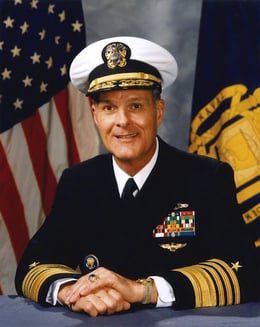 Charles R. “Chuck” Larson
Charles R. “Chuck” Larson
Served as Superintendent: August 31, 1983 - 1986; August 1, 1994 - June 3, 1998 (51st and 55th)
As a Class of 1958 Brigade Commander and Class President, Larson took on leadership roles early. He began his career as an aircraft-based aviator and changed to nuclear submarine service, accurately predicting that the submarines would play a critical role for the Navy in the Cold War. Holding these two roles is rare for a service member.
Larson commanded the USS Halibut, from 1973 - 1976, collecting sensitive equipment from Soviet vessels as well as Russian communications transmitted through ocean cables. He distinguished himself as the first naval officer chosen as a White House Fellow, and was a naval aide to President Richard M. Nixon. Then at 43 in 1979, he earned the title of second-youngest admiral in U.S. history.
In 1983 Larson became USNA Superintendent, where he advocated and raised funds for the building of Alumni Hall. After his tenure, Larson was promoted to Vice Admiral and became Commander, Second Fleet, Commander, Striking Fleet Atlantic and Deputy Chief of Naval Operations for Plans, Policy and Operations. He quickly moved up the ranks. In 1990 he was promoted to four star rank and became Commander in Chief, U.S. Pacific Fleet and Commander in Chief, U.S. Pacific Command. He then returned to serve as Superintendent a second time in 1994 (the highest ranking officer in USNA history to become Superintendent), where he helped achieve the Academy’s academic accreditation, added a character development program and set up a Naval Academy Foundation, among other accomplishments.
Admiral Larson retired from the Navy in 1998 at the end of his superintendent tenure. His accomplishments in the civilian sector are exemplary, and he served as a board member on a number of companies in defense, aerospace, energy and construction. Larson earned a record seven Navy Distinguished Service Medals, the Defense Distinguished Service Medal, three Legion of Merits and the Bronze Star Medal. He was named to the list of USNA Distinguished Graduates in 2006, and is buried next to his classmate and good friend, Senator John McCain, in the USNA Cemetery.
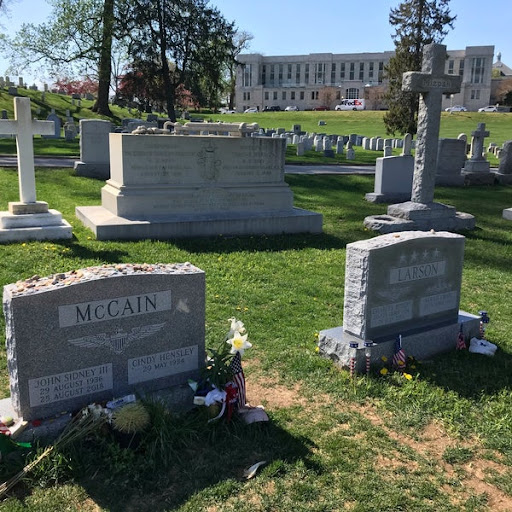
More to Come
The Naval Academy has been fortunate to have such excellent leaders throughout its history. Join us for the next post as we wrap up this series of fascinating superintendents. With them at the helm of the U.S. Naval Academy, our school and our midshipmen have flourished and are ever more prepared to serve our country at the highest levels of leadership. We encourage you to visit the Yard and feel the sense of history here. Every time you take a tour, enjoy a meal or shop at our stores, you’re supporting the midshipmen who support our country’s freedoms. Come be a part of history!




